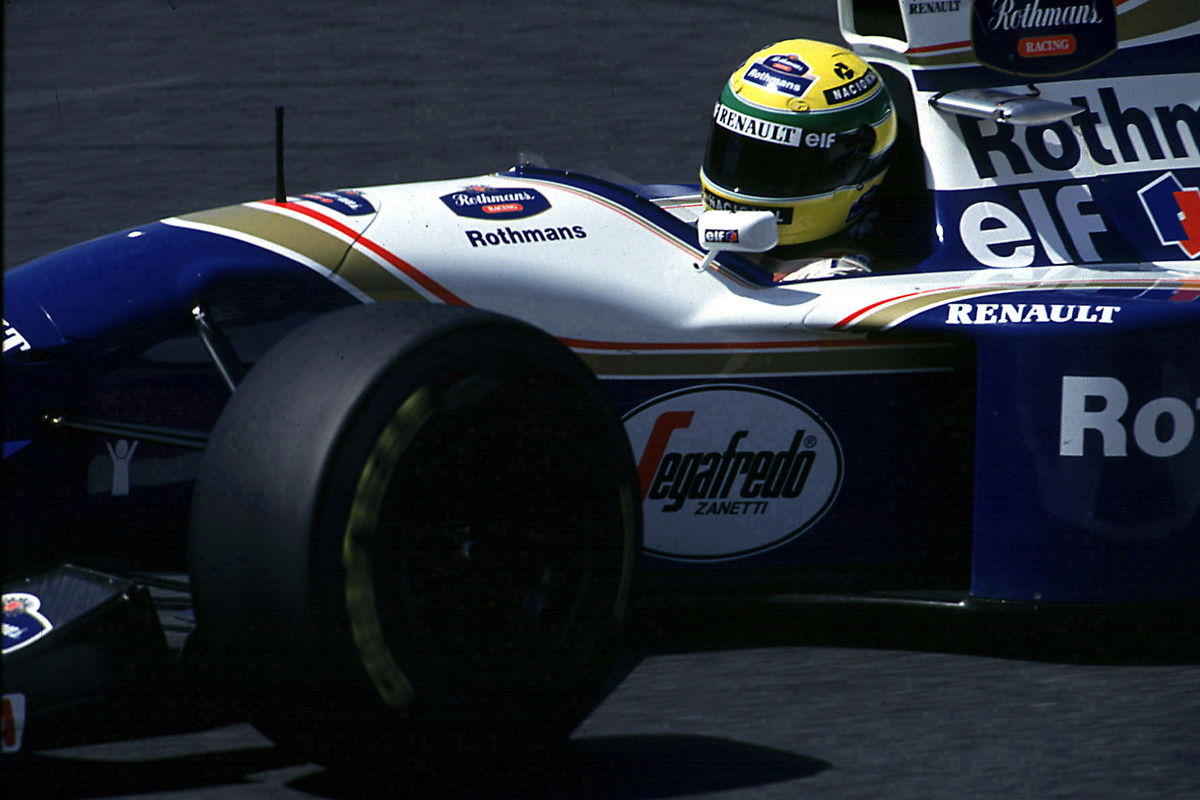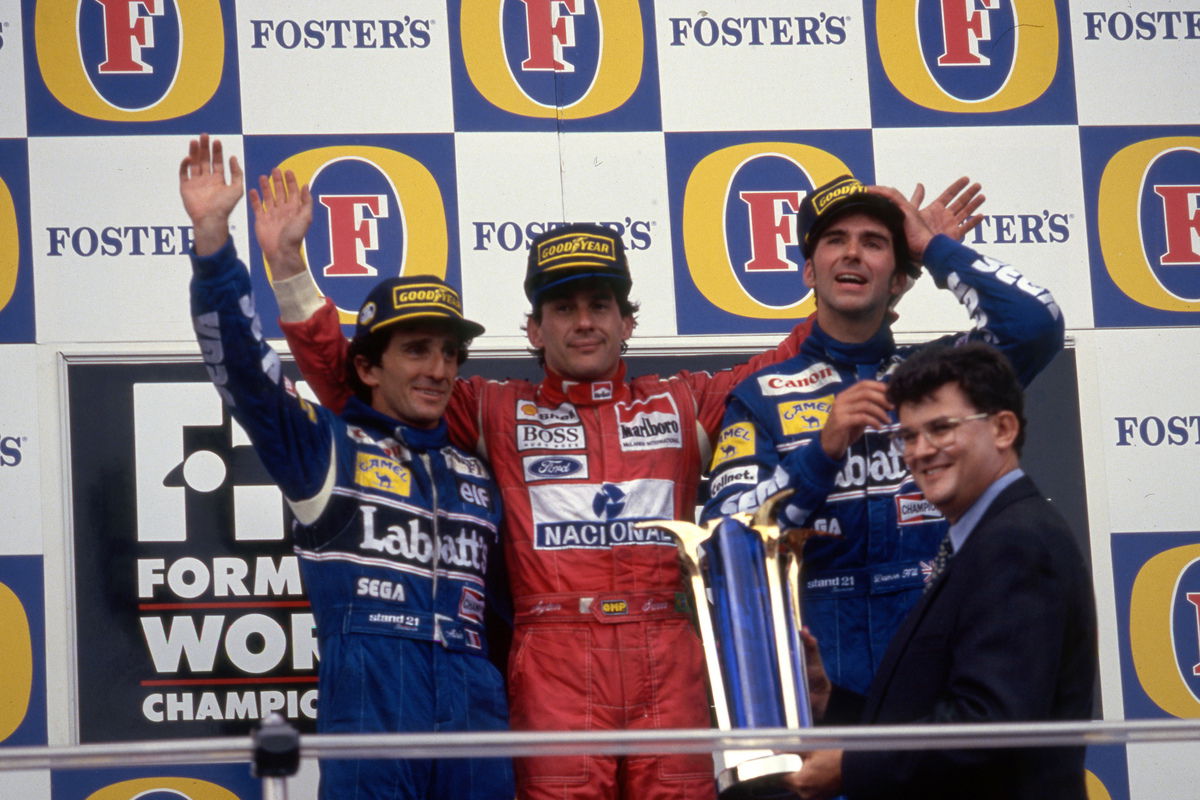

Senna was killed at the San Marino Grand Prix 30 years ago today on one of motorsport’s darkest weekends.
On the opening day of track action, Rubens Barrichello had crashed heavily at the final chicane when his Jordan clattered a kerb and was launched at the barrier.
A day later, Roland Ratzenberger became the first driver to lose their life during a grand prix weekend in over a decade when his Simtek suffered a front wing failure and left him careering into the wall at Villeneuve, a flat-out right-hander.
On race day, after leading the early laps of the San Marino Grand Prix, Senna left the road at Tamburello, killing the three-time world champion.
“He was a controversial figure. He was so aggressive on the track,” Hill recalled of his team-mate.
“Obviously he is massively revered by his legion of fans – and of course the whole nation of Brazil. He was carrying a kind of beacon of hope for a lot of Brazilians.
“When we went to his funeral, there was a guy interviewed and he was crying. He just said he was the best thing about Brazil.
“He had this weight on his shoulders, it seemed.”
Senna was a divisive character whose aggression on track changed the face of Formula 1.
He had controversial clashes with Alain Prost in 1989 and 1990, incidents which decided the championship on both occasions.
Those were counterpoints to moments of sublime talent, such as his drive to victory in the 1993 European Grand Prix – the opening lap of which has been termed the ‘lap of the Gods’ as he rose from fifth to first.
“He was a kind of enigmatic, curious figure,” Hill explained.
“I don’t think I took him that seriously when I was racing against him because I’d see him complain about other people’s driving standards, and yet there he was, someone who was quite happy to drive into the back of Alain Prost on the first lap of the grand prix to knock him out of the championship.
“I thought, well, he’s a bit hypocritical.
“He was formidable as a competitor, absolutely terrifyingly fast and committed.
“He drove with an aggression and a competitive spirit which is unrivalled, I think, even today, that was terrifying,” the 1996 world champion added.
“Unfortunately, I think it got the better of him. I think he was prepared to take every risk there was in order to win and that all culminated, sadly, in what happened in Imola. And he paid the price.
“But I think he was extraordinarily brave because I think he accepted that there were those risks. And he just was never going to back out of any kind of racing situation.
“He will live forever as one of the most astonishing racing drivers and sportsman to have gone into the arena.”

Hill had been team-mate to Prost at Williams in 1993, the retiring Frenchman’s seat taken by Senna the following year.
The trio stood atop the podium at the season-ending Australian Grand Prix in Adelaide – the final time either Prost or Senna did so.
Though their time together was brief, less than three full race weekends, Hill learned from Senna and got an insight into what made the Brazilian brilliant.
“When he came to the team, he was very emphatic,” he recalled.
“When he spoke to the engineers – normally an engineer would come up with a clipboard and say ‘how’s it going? Well, I’ve got a bit of understeer,’ and they’d walk off halfway through what you’re saying – but he used to grab them and say ‘no’ and make sure the engineer understood what he was saying about the car.
“And then he said it again, so the engineer was left in no doubt about what he said.
“I thought that was really important insight for me because everything can get lost.
“He was so precise and determined and rigorous and thorough, and that’s, I think, what I probably picked up being with Ayrton.
“But then I had been with Alain Post and also Nigel Mansell. They’re all the same. They work hard. They’re not just great; they are incredibly detailed and hardworking.
“When you combine the talent with all that attention to detail, they’re very, very difficult to beat.”






















Discussion about this post